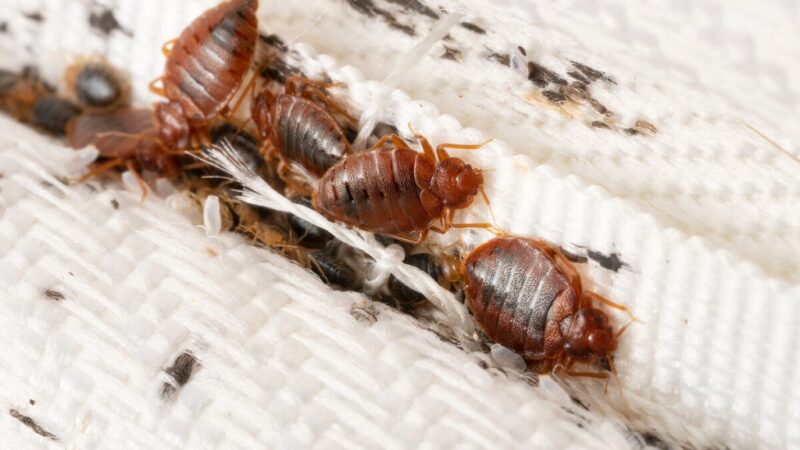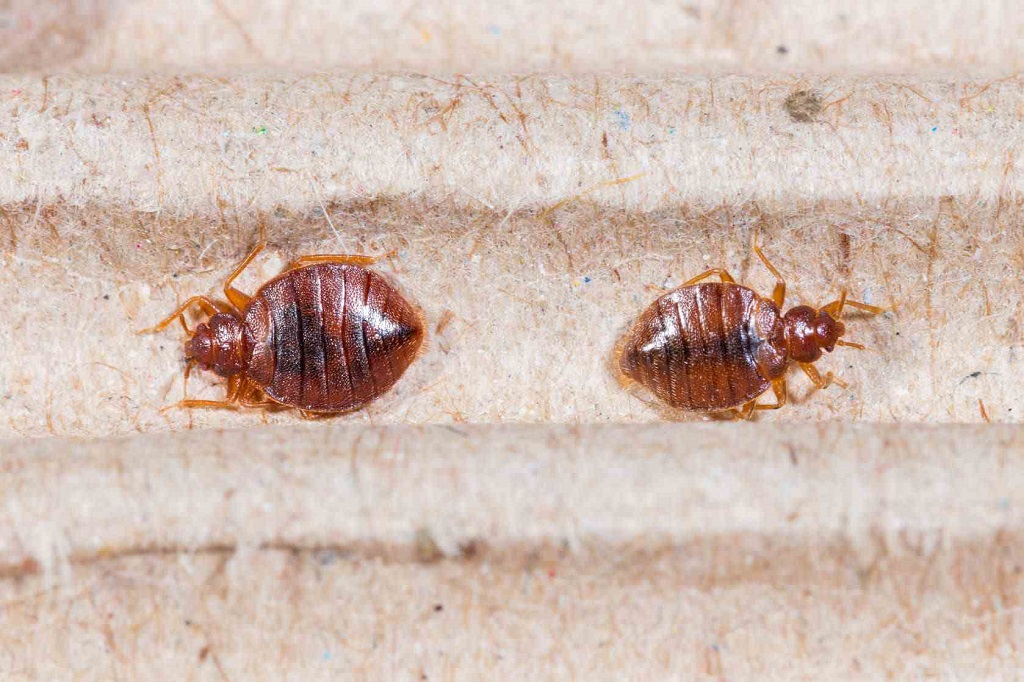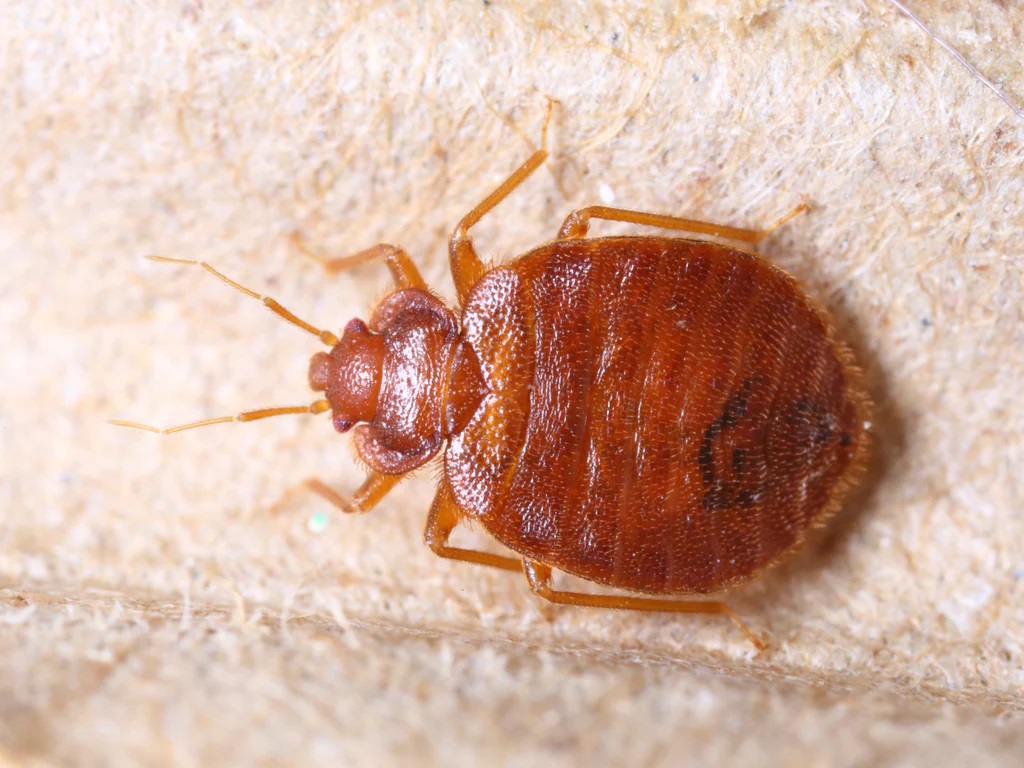Bed bug bites appear as small red welts on the skin, often clustered together in a straight line.
Signs Of Bed Bug Bites
Bed bug bites appear as red, itchy welts on the skin. They are often in a line or cluster, resembling mosquito bites. Some people may not have any reaction to the bites, making it challenging to identify the infestation. Regular inspection is crucial to detect bed bug bites.
One of the telltale signs of a bed bug infestation is the presence of bites on your body. These tiny pests feed on human blood while we sleep, leaving behind itchy, red marks that can be quite unsettling. But how can you identify bed bug bites? Let’s delve into the appearance of bed bug bites and the locations on the body where they commonly occur.
Appearance Of Bed Bug Bites
Bed bug bites typically appear as small, red welts on the skin. They can be easily mistaken for mosquito bites or other insect bites. However, there are a few distinct characteristics that can help you differentiate bed bug bites from others.
Firstly, bed bug bites usually appear in clusters or straight lines, often in a row. This is because these pests will often bite multiple times in the same area while searching for a suitable blood source. If you notice a series of bite marks that align in a linear or zigzag pattern, it could be an indication of bed bugs.
Secondly, bed bug bites tend to have a swollen and inflamed appearance. The affected area may be accompanied by itching and a mild burning sensation. While everyone’s reaction to bed bug bites can differ, it’s common for the surrounding skin to become red and irritated.
Locations Of Bites On The Body
Bed bug bites can occur on any part of the body that is exposed while you sleep. However, there are certain areas where these pests are more likely to target.
The face, neck, arms, and hands are often prime feeding spots for bed bugs, as they are typically exposed while we sleep. These areas have thinner skin, making it easier for the bugs to penetrate and feed.
Bed bugs may also bite the legs and feet, especially if they are near the bed. If you notice bites in these areas, it’s a good idea to inspect your sleeping quarters for further signs of an infestation.
While bed bug bites can appear anywhere on the body, it’s important to note that they will generally avoid areas covered by clothing during sleep. This is because bed bugs prefer easy access to the skin for feeding.
In conclusion, the appearance of bed bug bites can vary from person to person, but there are a few key features to look out for. Clusters or rows of red welts, along with swelling and itching, are typical signs of bed bug bites. Remember to check common feeding areas like the face, neck, arms, and hands if you suspect a bed bug infestation.
Physical Reactions To Bed Bug Bites
The physical reactions to bed bug bites can vary from person to person, but generally, they can be categorized into allergic reactions and secondary skin infections.
Allergic Reactions
Some individuals may have an allergic reaction to bed bug bites, causing more pronounced symptoms than others. These reactions can include:
- Redness and Swelling: Bed bug bites often result in red, swollen areas on the skin, resembling small welts or hives.
- Itching: In many cases, bed bug bites can cause intense itching, which can lead to further irritation if scratched.
- Rash: A rash may develop around the affected area, especially if the individual has sensitive skin.
- Blisters: In severe cases, bed bug bites can cause blisters to form, filled with fluid that exacerbates discomfort.
Secondary Skin Infections
Bed bug bites can also leave individuals susceptible to secondary skin infections due to scratching and open wounds. These infections can be both bacterial and fungal, resulting in:
- Bacterial Infections: Scratching bed bug bites can break the skin, allowing bacteria to enter and cause infections such as impetigo or cellulitis.
- Fungal Infections: Similarly, open wounds from scratching can create an environment for fungal infections like athlete’s foot or ringworm to develop.
It’s important to note that while these physical reactions to bed bug bites can vary in severity, they are generally not considered a serious health risk. However, if symptoms persist or worsen, seeking medical attention is recommended.
Differentiating Bed Bug Bites From Other Insect Bites
When it comes to identifying bed bug bites, it’s crucial to distinguish them from other insect bites. Knowing the characteristics of bed bug bites and how they compare to bites from other common insects can help you determine the source of your skin irritation.
Characteristics Of Bed Bug Bites
Bed bug bites typically appear as small, red, itchy welts on the skin. They often occur in a linear or clustered pattern, as bed bugs tend to bite multiple times in a localized area. The bites may also develop a raised, inflamed appearance and can persist for several days. Additionally, some individuals may not have any visible reaction to bed bug bites, making identification more challenging.
Comparison With Other Common Insect Bites
When it comes to differentiating bed bug bites from other insect bites, there are several key distinctions. Unlike mosquito bites, which typically appear as raised, round bumps, bed bug bites often form a linear or clustered pattern. Additionally, bed bug bites may be more persistent and take longer to heal compared to mosquito bites. Flea bites, on the other hand, often appear in random, scattered clusters and can be more prone to secondary infections due to scratching.
The Impact Of Bed Bug Bites On Health
Bed bug bites can have various impacts on human health, both physically and psychologically, a concern that is also addressed in the Anxiety Fighters Guide. These tiny insects feed on human blood, usually during the night when individuals are asleep, a behavior quite different from what one might find when researching what do fleas look like to the human eye. Their bites can lead to a range of discomforts and potential health risks, including itchy, red welts, and allergic reactions in some people. Understanding the effects of bed bug bites is crucial to prevent infestations and minimize their impact on daily life. Additionally, the psychological stress and anxiety associated with bed bug infestations can be significant, further emphasizing the importance of early detection and effective control measures.
Potential For Disease Transmission
While bed bug bites themselves are not known to transmit diseases to humans, they can still pose a health risk. Bed bugs are not vectors for diseases like mosquitoes or ticks. However, scratching the bites can break the skin and create open wounds, which can increase the risk of secondary bacterial infections, such as cellulitis or impetigo. It is essential to avoid scratching the bites to prevent potential complications.
Psychological Effects
Bed bug bites can also have significant psychological effects on individuals. The presence of these pests in the living environment can cause anxiety, stress, and sleep disturbances. People may experience persistent feelings of being unclean or invaded, leading to emotional distress and mental health issues, such as insomnia, depression, and anxiety disorders. The fear of bed bug bites and the constant worry about infestations can be overwhelming and disrupt daily life.
It is essential to address both the physical and psychological impacts of bed bug bites. Taking preventive measures, such as regular inspections, proper hygiene, and early detection, is key to avoiding infestations and reducing the risk of health issues. If a bed bug infestation is suspected, it is recommended to seek professional help for effective eradication and to alleviate any psychological distress caused by the infestation.
Treatment And Prevention Of Bed Bug Bites
As uncomfortable as bed bug bites can be, it is essential to know how to treat and prevent them effectively. Understanding the appearance of bed bug bites and the steps to take for treatment and prevention can help you alleviate discomfort and avoid future encounters with these pesky insects. In this article, we will discuss how to manage bed bug bites and the preventive measures you can take to avoid them.
Managing Bed Bug Bites
When it comes to managing bed bug bites, there are several steps you can take to alleviate discomfort and promote healing.
- Cleanse the affected area: Thoroughly wash the bitten area with mild soap and water to remove any dirt or bacteria that may have accumulated.
- Apply a cold compress: Using a cold compress or ice pack wrapped in a cloth, apply it to the bed bug bites to reduce swelling and itchiness.
- Use over-the-counter creams or ointments: Topical creams or ointments that contain hydrocortisone or calamine can provide temporary relief from itching.
- Avoid scratching: It can be tempting to scratch bed bug bites, but doing so can lead to further irritation and increase the risk of infection. Keep your nails short and use antihistamine creams or oral medications to minimize the urge to scratch.
- Monitor for signs of infection: If you notice signs of infection, such as increased pain, redness, swelling, or pus, seek medical attention promptly.
Preventive Measures For Avoiding Bites
Prevention is key when it comes to avoiding bed bug bites. By taking the following preventive measures, you can reduce your chances of encountering these unwanted pests:
- Regularly inspect your sleeping area: Check for signs of bed bugs, such as dark spots on the mattress or furniture, shed insect skins, or tiny bloodstains, before settling down for the night.
- Encase your mattress and pillows: Use bed bug-proof encasements to protect your mattress and pillows from infestation. These encasements create a physical barrier that prevents bed bugs from accessing your sleeping area.
- Keep your surroundings clean: Regularly vacuum your living space, including carpets, rugs, and upholstery, to remove any potential hiding spots for bed bugs.
- Inspect second-hand furniture: Before bringing used furniture into your home, carefully inspect it for any signs of bed bug infestation. If in doubt, consider avoiding the purchase altogether.
- Be cautious when traveling: Inspect hotel rooms for bed bugs before unpacking your belongings. Keep your luggage off the floor and use luggage racks or protective covers to minimize the risk of bringing bed bugs back home.
By following these preventive measures and promptly addressing any signs of bed bug bites, you can protect yourself and your living space from the discomfort and hassle of dealing with these unwelcome pests.
Frequently Asked Questions For What Do Bed Bugs Bites Look Like To The Human Eye
What Do Bed Bug Bites Look Like?
Bed bug bites typically appear as red, itchy bumps in clusters or straight lines on the skin. They may also cause swelling and a burning sensation. These bites can vary in appearance depending on the individual’s reaction to the bites and the number of bites received.
Conclusion
Identifying bed bug bites is crucial for prompt action. By recognizing the distinct characteristics of these bites, you can take appropriate measures to address the infestation. Understanding the appearance and symptoms of bed bug bites is essential in preventing further discomfort and potential health risks, just as carefully preparing the land by enriching the soil with organic matter and ensuring proper drainage is crucial for establishing a healthy garden. Stay vigilant and informed to ensure a comfortable and safe living environment.



